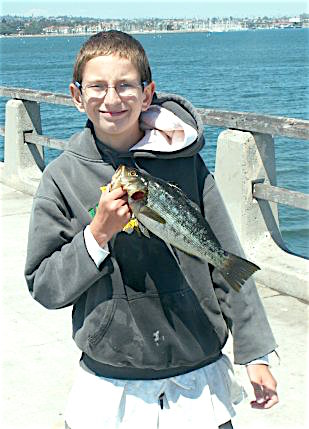
Daniel and his keeper-size kelp bass
Date: Sep[tember 3, 2007; To: Pier Fishing In California Message Board; From: sheldon; Subject: Cabrillo Pier Late Cabrillo Pier
Took my son and we got there around 9:00am or so and the parking lot had the most cars we’ve seen in it for the time we’ve been fishing there….only the lsat 2 months or so. The most cars we’ve seen is aboit 20 or so, whereas the lot had about 100 cars that day. We had been fishing there on Fridays to avoid any potential crowds since my son was on summer vacation and it’s also one of my days off. The pier and the jetty had a higher amount of people as well, but spots were available. We usually walked the length of the pier throwing plastics but ended up staying in one spot due to the number of anglers. Talking to the anglers as we walked to our spot revealed the action was slow. It was slow for me till I fished the side of the pier facing the jetty. I hooked a small ‘but pretty quick and would, through the course of the day, catch 8 additional small halibut off that side…..I got two on consecutive casts!! It was neat because the water was shallow enough to be able to see most of the hookups as well as a lot of tailing fish. Nobody prior to my catching the first one was fishing that side of the pier, but soon some anglers moved to that side. I saw two other guys fishing that side nail a small ‘but each. One was on a krock and I think the other was on bait.
I caught everything on a 3″ Big Hammer swimbait on 6-lb line. It was a previously used one that was in my box already threaded on a 1/4 oz leadhead. I’ve definately have gotten my monies worth out of that one and it is still fishable!!! It was a yellowed green colored lure. My son nailed a small ‘but, two sand bass (one was 11 1/2″….so close), a lizard fish, and a queenfish on a 3″ Big Hammer swimbait in the Deep Blue color. We did see a few anglers catch other fish….a bareacuda, small bass, and a few macs here and there, but pretty slow for the most part. It was fun to see so many people even if it limited our fishing area. There was a couple sea lions prowling around the pier and a school of dolphins outside the jetty too. It was great out there with a nice onshore breeze to keep things cool.
By the time we left at 2:00pm the lot was pretty much full and upon exiting the park, saw they had closed the entrance off due to the park having reached capacity. There was a lot of traffic as people were looking for street parking in the neighborhood and a lot of people were still walking in with ice chests ready to enjoy the day on the beach.
Potpourri — Perhaps more than you want to know about the Cabrillo Pier
<*}}}}}}}}}>< — Although at first glance the pier would not seem to be too different from most other SoCal piers, the proximity to the breakwater does bring in a larger than normal mix of fish. In delving through the pier surveys conducted by the Fish and Game Department, Cabrillo stands out by having one of the largest mixes of fish. 44 different species were recorded, virtually all the common species as well as a couple uncommon to SoCal piers—copper rockfish and gopher rockfish. Almost every year sees more than 20 species of fish recorded. The list (numerically) — white croaker, shiner perch, jacksmelt, Pacific mackerel, black perch, white seaperch, queenfish, topsmelt, Pacific bonito, walleye surfperch, opaleye, yellowfin croaker, kelp bass, striped seaperch, blacksmith, barred sand bass, California sheephead, pile perch, rubberlip seaperch, sargo, California halibut, jack mackerel, California scorpionfish, halfmoon, Pacific sardine, California corbina, black croaker, cabezon, copper rockfish, shovelnose guitarfish, gray smoothhound shark, senorita, California lizardfish, barred surfperch, spotfun croaker, diamond turbot, spotted sand bass, brown rockfish, gopher rockfish, black and yellow rockfish, white seabass, zebra perch, salema and giant kelpfish.
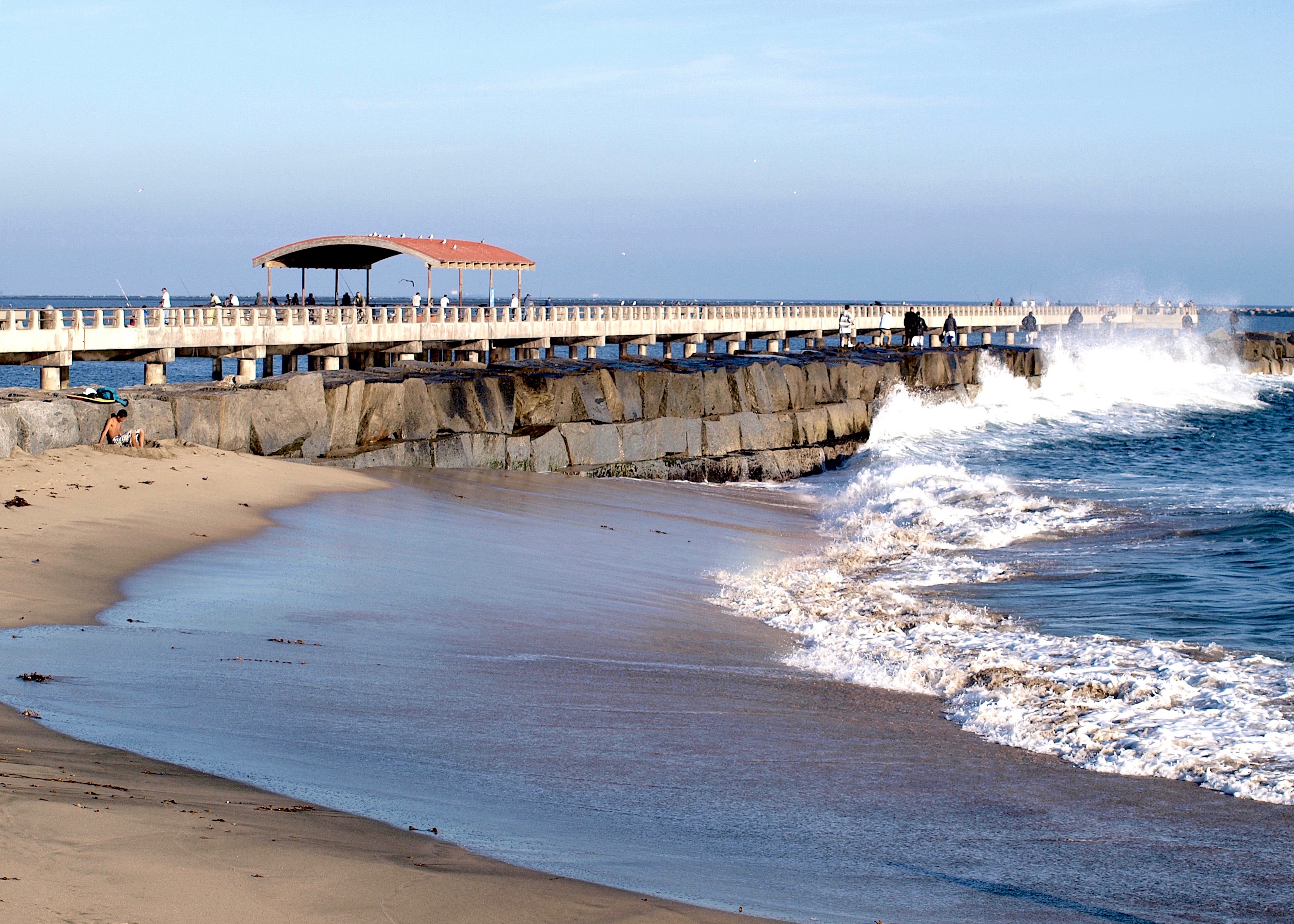
High tide can be dangerous and people occasionally are trapped on the jetty (that can become very wet and slippery). Some do not escape.
<*}}}}}}}}}>< — I’ve heard reports that the state is going to pump sand onto adjoining beaches. The plan is designed to improve water quality in the area but would probably mean that the ecosystem of the pier would also change. Although the bottom is already primarily sand and mud, it would probably lead to an even shallower environment and possibly lead to the area between the pier and breakwater becoming more of an eelgrass haven. It could help but probably would hurt.
<*}}}}}}}}}>< — Although it pales in comparison to the Aquarium of the Pacific in Long Beach, Cabrillo Park contains its own aquarium—the Cabrillo Marine Aquarium. It’s smaller and less techy than its cousin but also quite a bit less expensive and a great place to take the children. For more information: https://www.cabrillomarineaquarium.org/
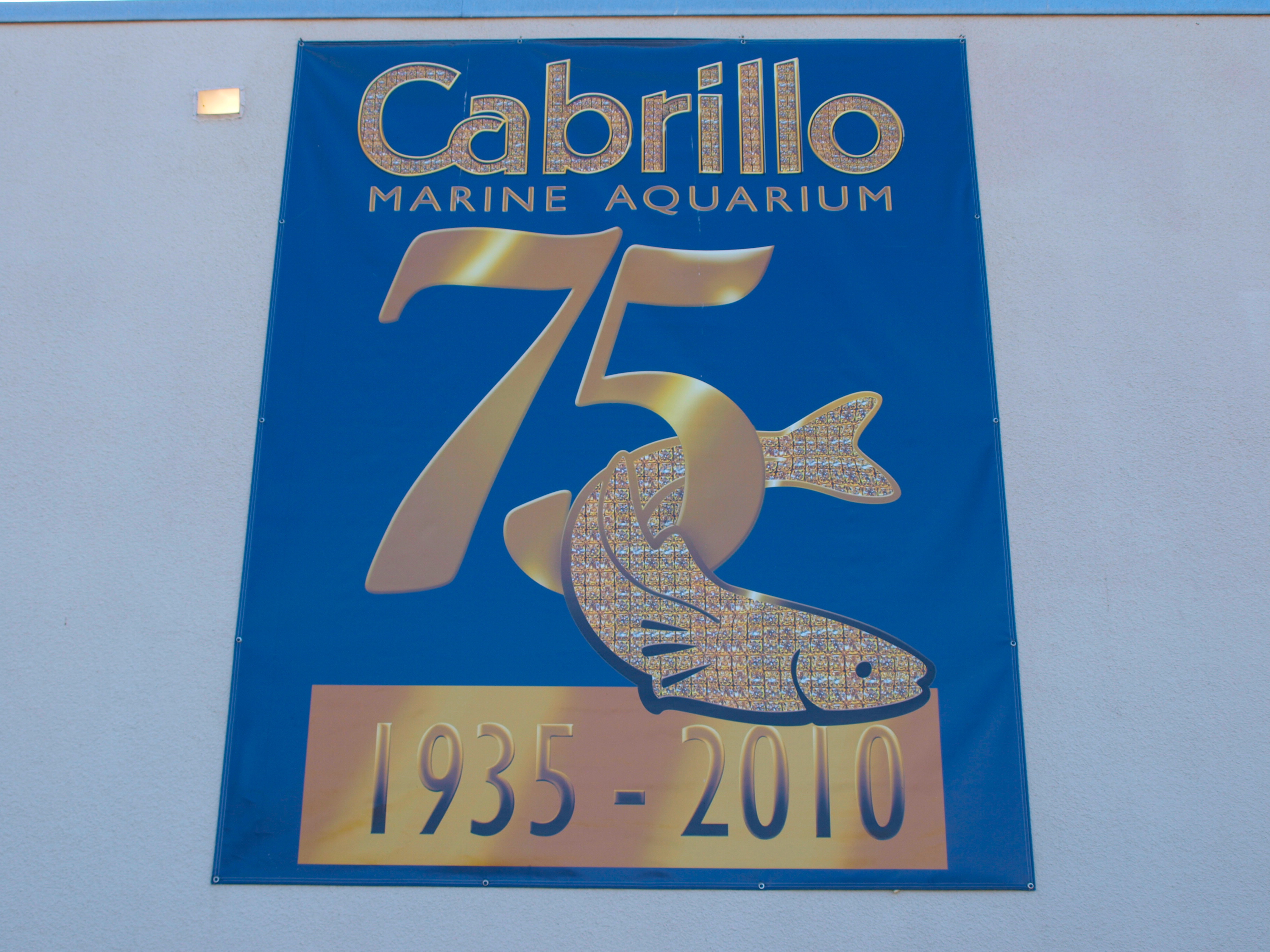
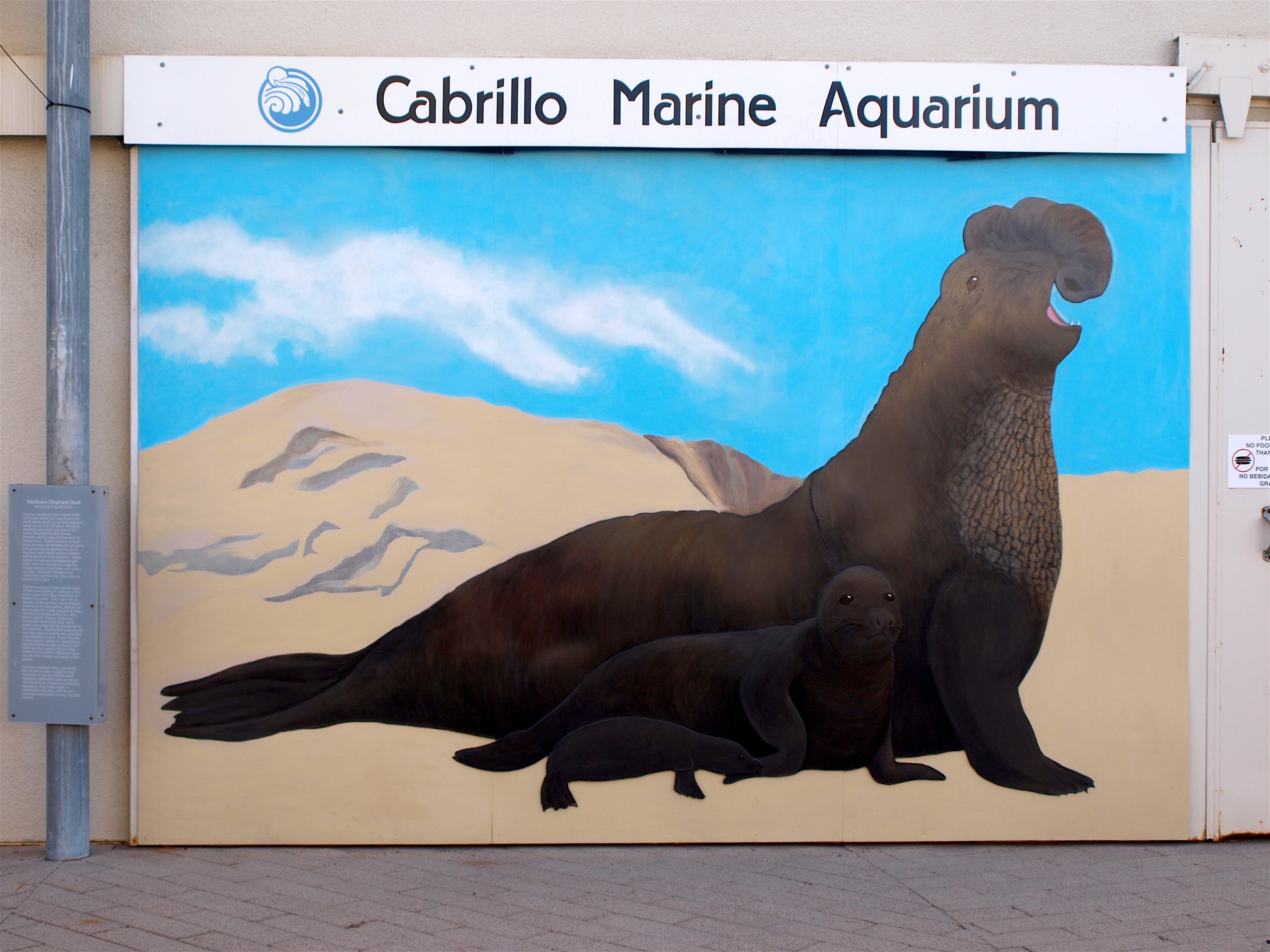
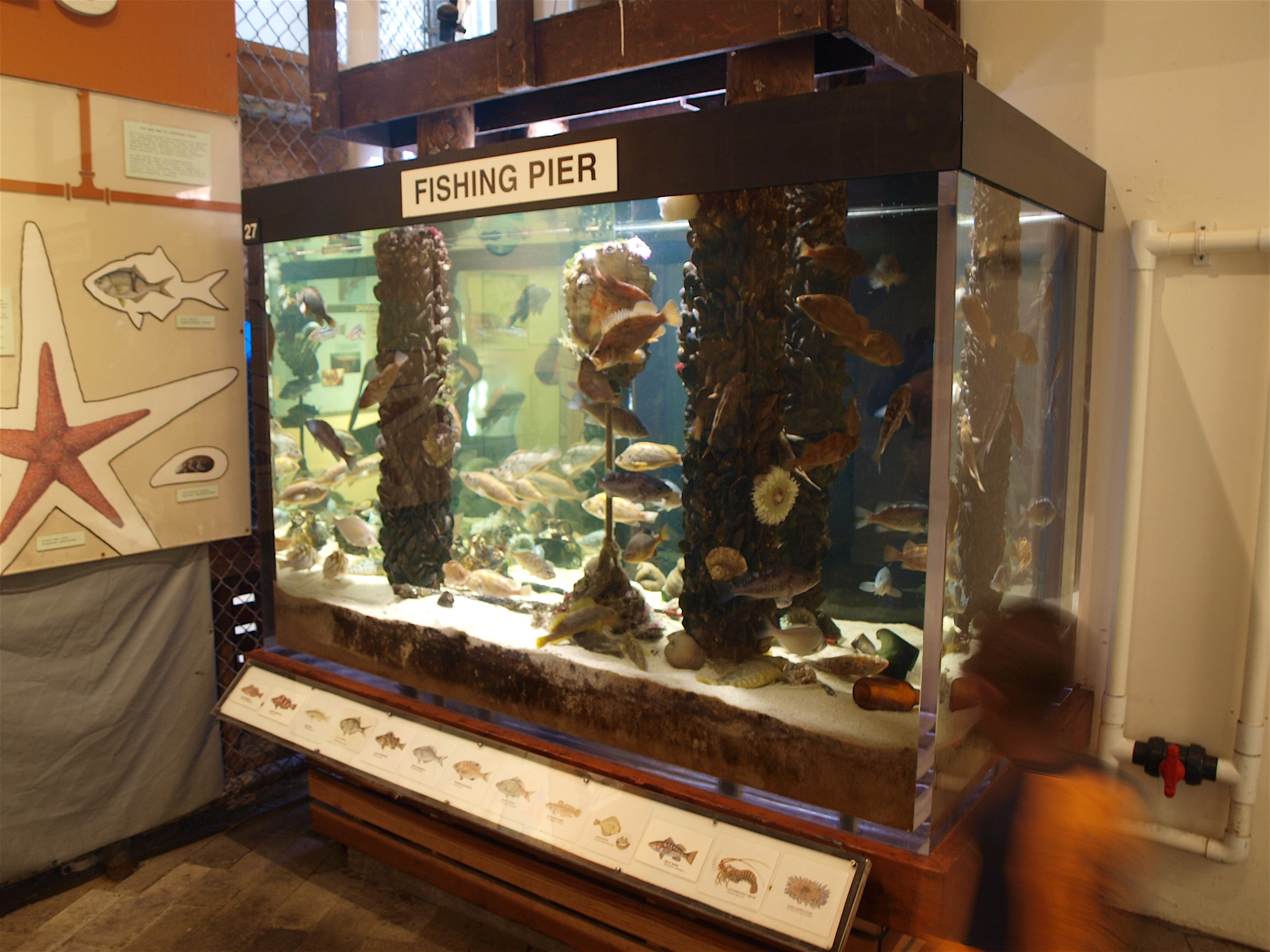
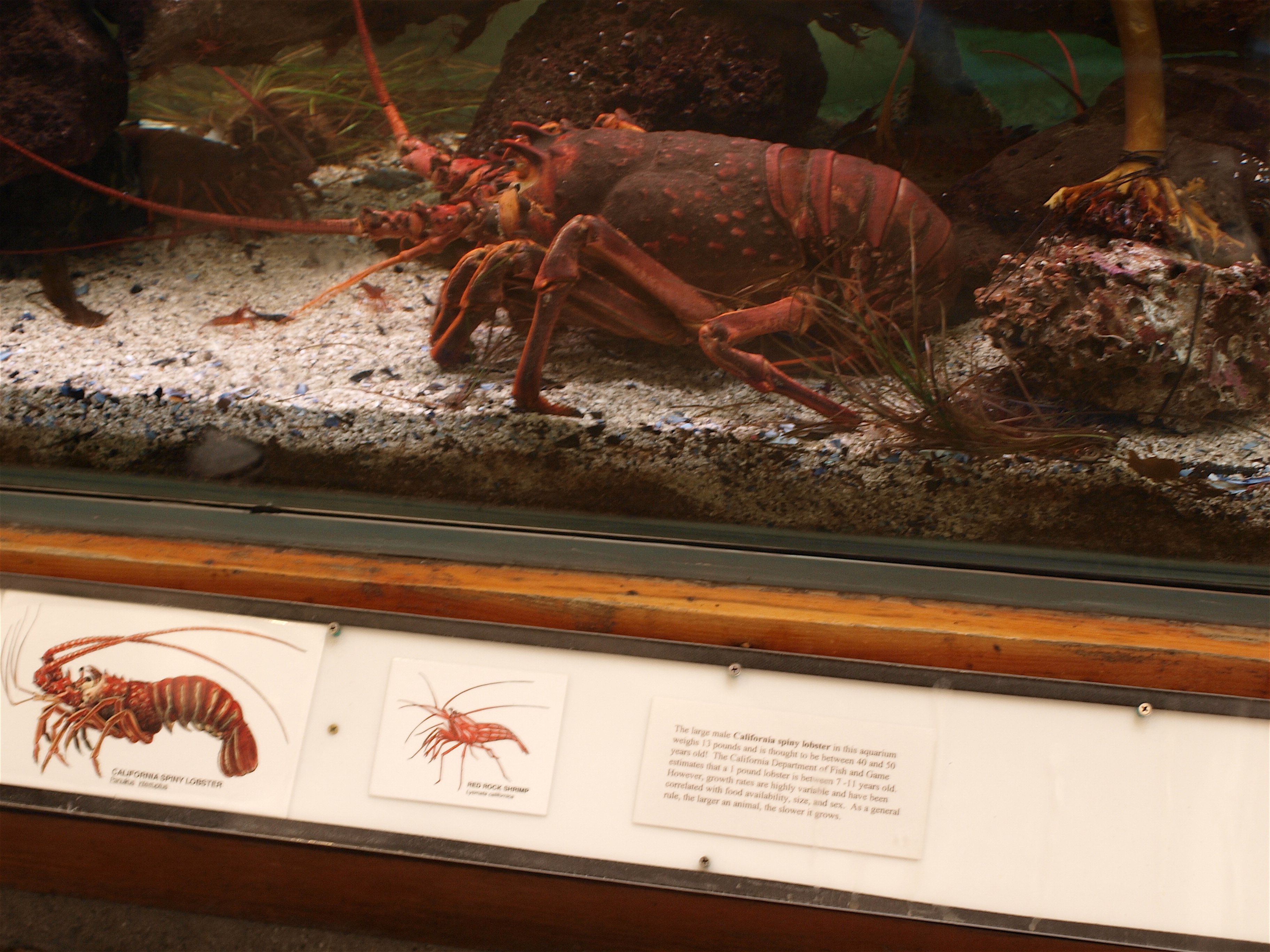
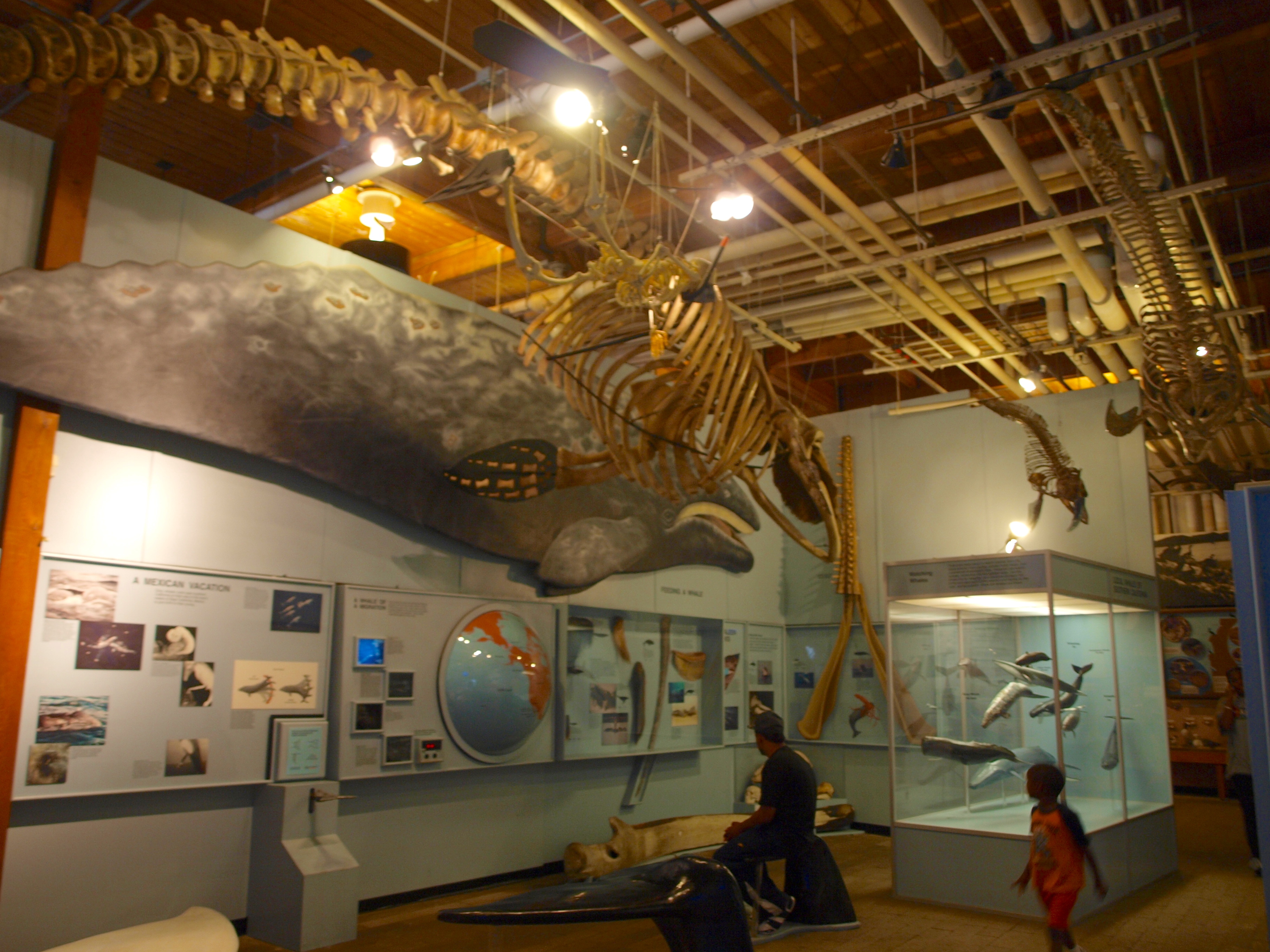
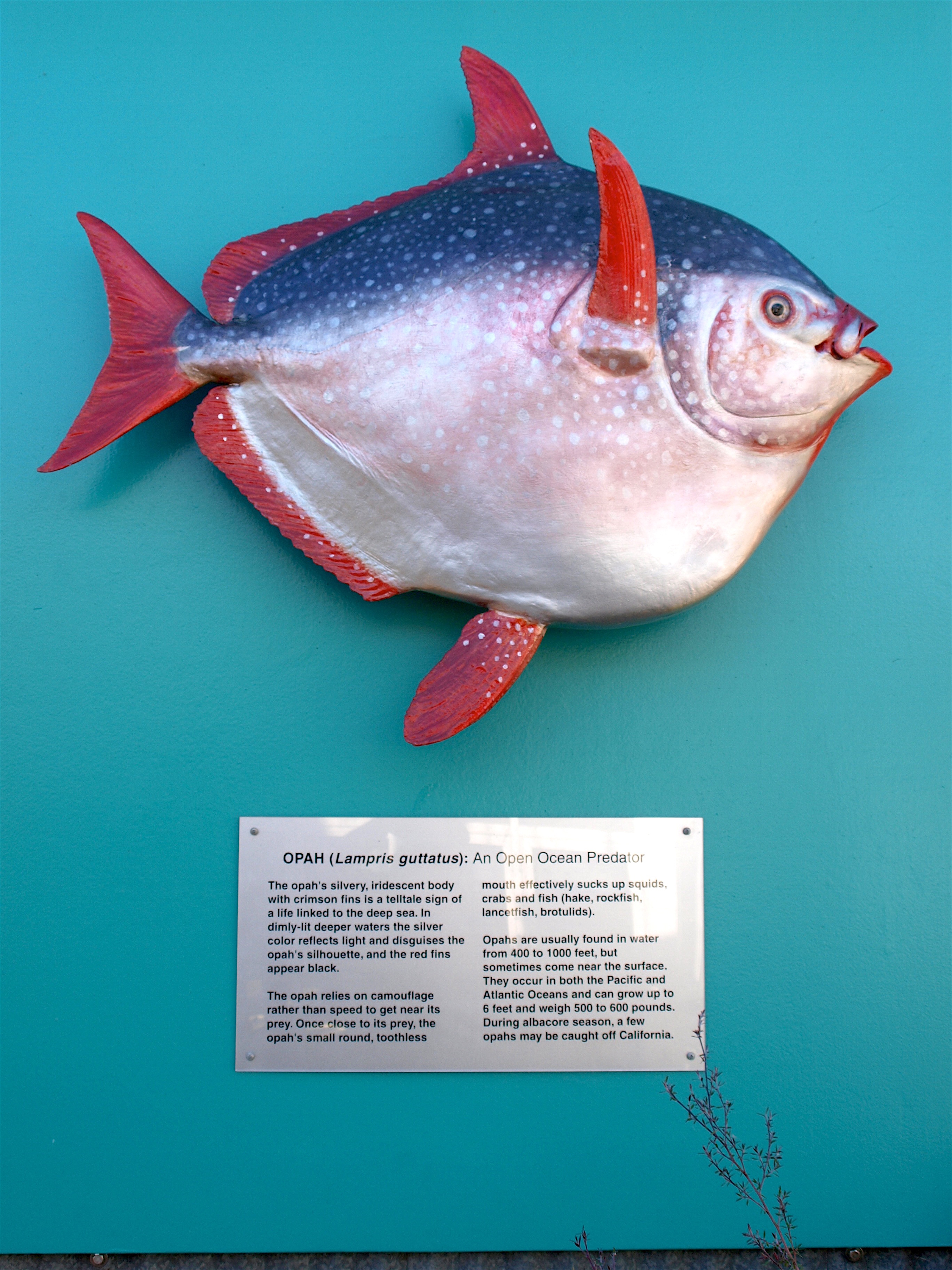
<*}}}}}}}}}>< — Even though I have seen relatively few sharks caught at the Cabrillo Pier, that doesn’t mean there aren’t a lot of sharks in these waters. Even so, the numbers are nowhere the same as described in the following quote—which is talking about the year 1860.
“While some men were digging for treasure, others sought fortune in the deep. Spearing sharks…was an exciting industry at this period; sharks running in large numbers along the coast, and in the waters of San Pedro Bay. In May, Orin Smith of Los Angeles, with the aid of his son, in one day caught one hundred and three sharks, from which he took only the livers; these, when boiled, yielding oil which, burned fairly well, even in its crude state. During the next year, shark-hunting near Rattlesnake Island continued moderately remunerative.” —Harris Newmark, 1916, Sixty Years in Southern California, 1853-1913
<*}}}}}}}}}>< — As part of the Montrose Settlement it was decided to use part of the money to develop artificial reefs adjacent to some of the piers in the Santa Monica-Long Beach area. One pier that was felt could benefit from such a reef was this pier. However, when tests were done on the mud/sand that fronts the pier it was found to be just a little too soft for the rocks that would have been needed for the reef. Test showed that the rocks would simply sink into the super soft bottom and quickly be covered, a fact that sort of puts a damper on a reef.
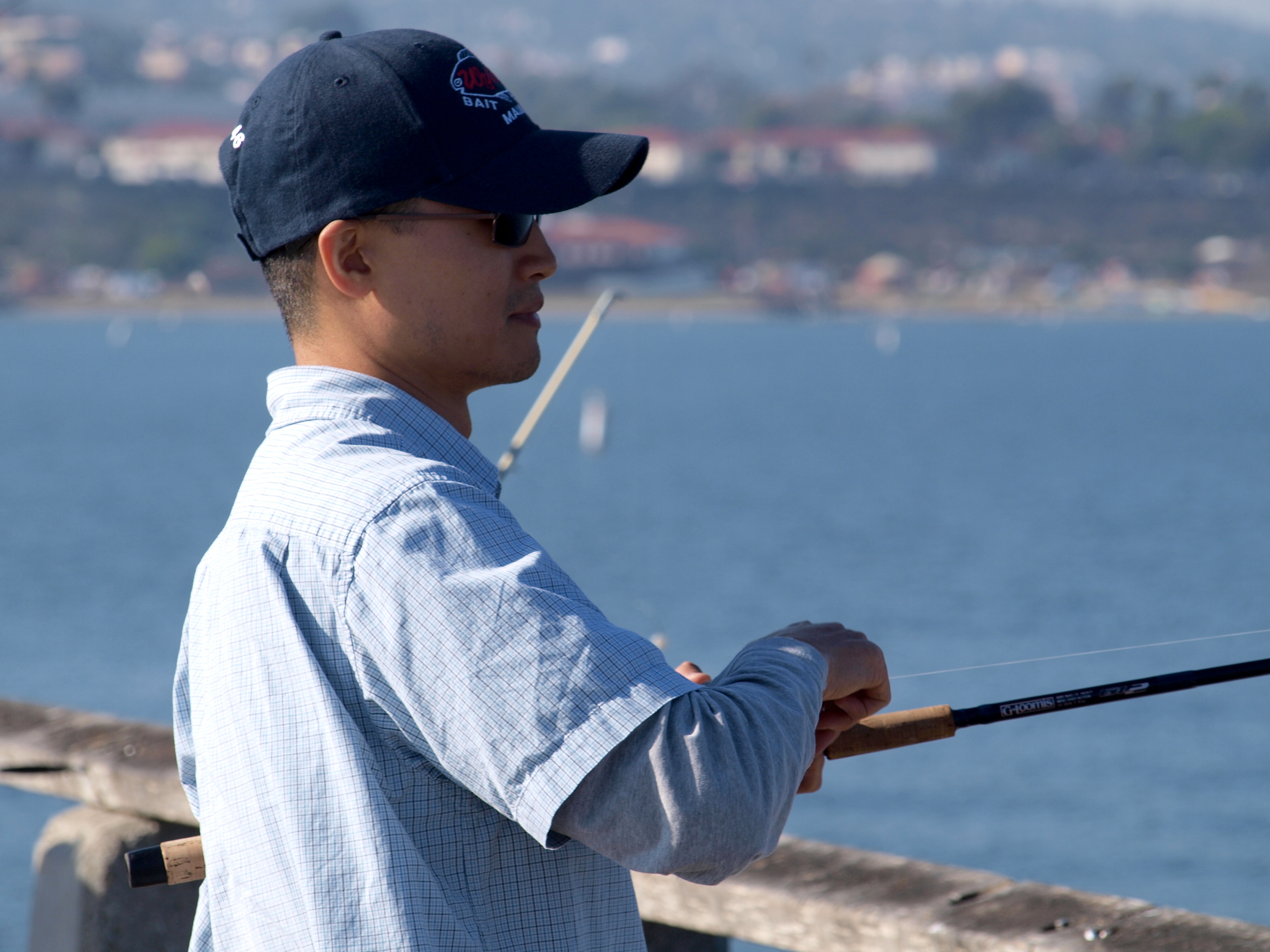
kelpangler (Eugene Kim)
Did You Know? That the pier has a regular summer Pier Fishing Program? Groups of kids or adults can reserve a time to go to the pier and learn the basics of fishing as well as learn about environmentally responsible fishing and fishing regulations. The program has served up to 1,500 people a summer. The program is sponsored by the Ken Malloy Harbor Regional Park and the City’s Recreation and Parks Department.
Did You Know? That the beach on the outside of the breakwater is considered one of the best beaches in the area to see grunion when they make their runs. The small, 5- to 7-inch smelt come ashore at night to spawn, usually four nights in a row after a full moon and a new moon, which is every two weeks. You’ve got to be there during the two hours of high tide and though the fish can show up from March through August, the season is closed April and May. They can only be caught by hand and those 16 or over need a license.
Did You Know? That the pier has been seen in at least two TV shows. One day I was watching an episode of Monk when I spotted the pier (which was supposedly located in San Francisco). It got me wondering how many other movies or TV shows had used the pier for a setting? The only one I have been able to find is an episode of the TV show Dexter (Episode 8, Season 3) and again the scene is supposed to represent a pier in an other area, this time Miami.
History Note. When one considers the early history of both San Pedro and the Cabrillo Beach area, one is confronted with the tremendous, largely man-made, ecological changes that have taken place. Prior to the construction of the San Pedro Breakwater, the area out near Point Fermin and today’s Cabrillo Beach was an oceanfront area, unprotected and open to the whims of winter storms and changing channels. The area to the north and east was largely estuarine (a result of the Los Angeles River) with sandbars, mudflats and salt marshes.
Regardless of possible danger, Sepulveda’s Landing, one of California’s earliest shipping sites, was located on this point (by 1835). Shortly thereafter, exact date unknown but prior to 1850, the area’s first pier, called Tomlinson’s Wharf, was built here. Spurred along by the beneficial construction in the 1850s of the Los Angeles and San Pedro Railroad, along with regular stagecoach and wagon service, the area became a major port area.
When a storm in 1858 destroyed most of Tomlinson’s Wharf, Phinas Banning decided to move to the better-protected mud flats opposite the old wharf. The spot where he built his new wharf was given the name Wilmington in honor of his birthplace. Deeper water channels were dredged in 1871 and a breakwater was constructed in 1873 between Rattlesnake Island (today’s Terminal Island) and Deadman’s Island (which no longer exists).
On Rattlesnake Island the small vacation town of Brighton Beach developed and at that town was found one of the earliest pleasure piers in the state.
The construction of the nine-mile-long federal San Pedro Breakwater in 1899 changed forever the nature and ecology of the bay. Today, the Port of Los Angeles and its more than 7,400 acres of land and water (Worldport LA) is one of the largest artificial harbor complexes in the world and is the third-busiest container port in the world (after Singapore and Hong Kong).
Cabrillo Park’s beach itself is also largely artificial. It was created in 1927 when dredged material was dumped along the western base of the breakwater. Just a year later, in 1928, the Department of Fish and Game observed grunion spawning on the sand.
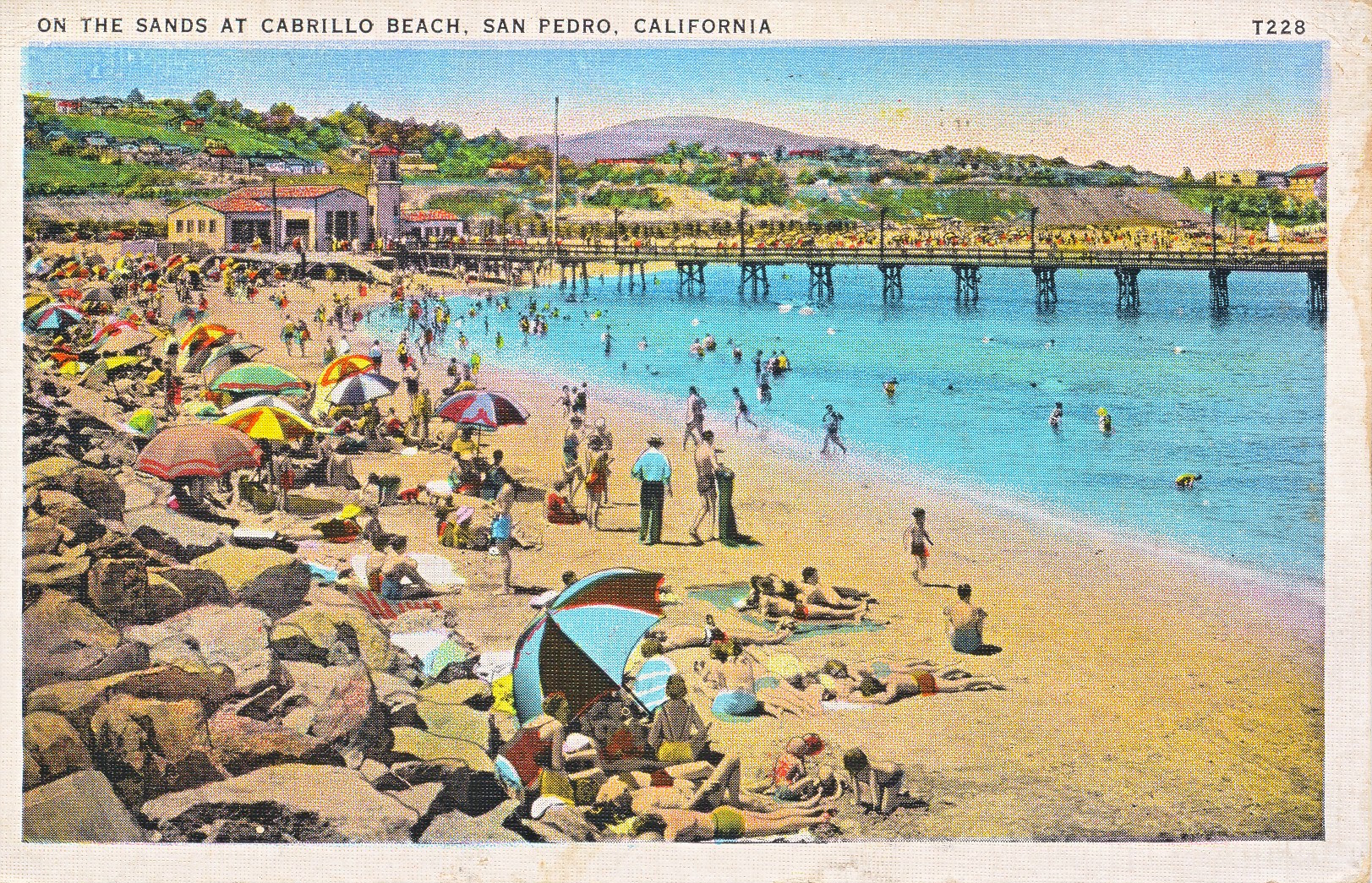
The Cabrillo Beach and pier — 1942
When Cabrillo Beach was opened in 1928 it included a pleasure pier (several hundred feet inland from today’s pier) and a boathouse at the foot of the pier. Both were built during the “Great Depression” as a government work project and the pier would serve many years as San Pedro’s “pleasure pier.” A few years later, in 1932, the Cabrillo Beach Bathhouse (designed for four thousand people) was opened in preparation for the Los Angeles Olympics while the boathouse became a venue for Olympic sailing events. After the eventual destruction of the pier, the boathouse at the foot of the pier would become the Cabrillo Beach Museum.
Like most piers, the pier suffered occasional damage from storm—and sailing craft. The Los Angeles Times on January 12, 1932 reported “a naval lighter crashed into the Cabrillo Pleasure Pier, which was being repaired from damage incurred a month ago, and the pier again was demolished at that point. The eight-meter racing sloop Marin also crashed the pier at the same point and fully a dozen boats were piled up alongside the pier. Among them were the Catalina Flier, a sixty-foot launch, and the forty-foot pleasure fishing boat, King B.”
A report in the Wilmington Daily Press on December 17, 1932 noted that a gale the previous night “piled up small craft on Cabrillo Beach and caused $1,000 damage to the beach’s pleasure pier.” The Los Angeles Times reported that “eleven small Navy boats together with twenty small yachts and fishing craft were washed up on the beach.
The pleasure did serve as a base for Sportfishing boats, boat rentals, and fishing barges. The fishing barges Olympic, Santa Clara, Lighthouse, Bay, Frank Lawrence and Rich Richie were included in the mix.
Fishermen, Attention!!
Olympic Fishing Barge — Now Anchored On Horseshoe Kelp!!!
Shore boats run every hour from CABRILLO BEACH PIER, San Pedro
First boat 6 a.m., Sunday 5 a.m. — Price $1.00, including trip, pole, bait
Plenty of FREE PARKING!!! — Phone San Pedro 0846 or Michigan 6491
—Los Angeles Times. June 28, 1940
At Cabrillo Beach — Kids Launch Work On New Fishing Pier
It was a breathless moment. All around, on the brink of a little beach bluff near the lifeguard station, spectators waited. Clay McKinley, 8 years old, of Torrance, gripped the handle of a rusty old shovel. Gene Herrick of Long Beach, project superintendent for Guy. F. Atkinson Co., shuffled a batch of blueprints. He carefully rolled one out.
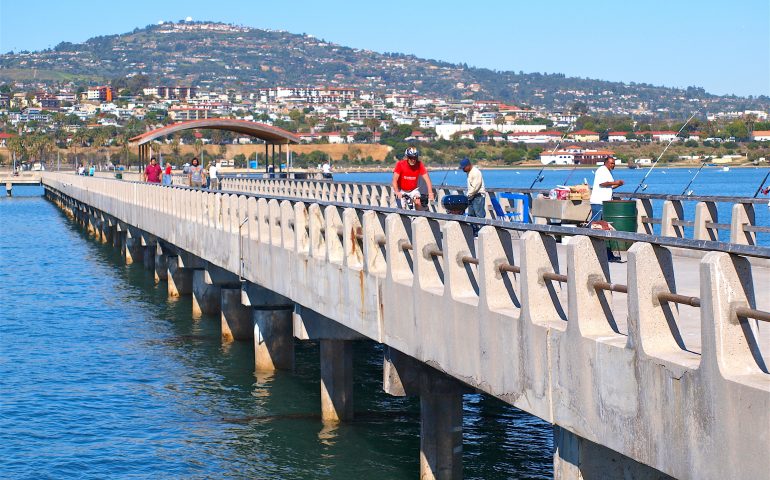
Where can I purchase early morning bait (anchovy’s) is San Pedro to fish off the pier?
Your best bet would be at the “Rusty Hook” — 245 N Gaffey St., San Pedro, CA 90731
(310) 832-2429
Yes l been fishing cabrillo , ( years ) from smelt , acoves , mac attack bone heads , 32″ halbit large shark yellow tail. Iong timeago. Albercore !!!?#@&
. ,( my wife said, it’s all bull$*** . it’s my storyline )
Iam stick en to it !;? ))
When is (will) be the best time to catch Halinut on Pier?
Typically May until about October.